Balkinization
an unanticipated consequence of
Jack M. Balkin
Balkinization Symposiums: A Continuing List
E-mail:
Jack Balkin:
jackbalkin at yahoo.com
Bruce Ackerman
bruce.ackerman at yale.edu
Ian Ayres
ian.ayres at yale.edu
Corey Brettschneider
corey_brettschneider at brown.edu
Mary Dudziak
mary.l.dudziak at emory.edu
Joey Fishkin
joey.fishkin at gmail.com
Heather Gerken heather.gerken at yale.edu
Abbe Gluck abbe.gluck at yale.edu
Mark Graber
mgraber at law.umaryland.edu
Stephen Griffin
sgriffin at tulane.edu
Jonathan Hafetz
jonathan.hafetz at shu.edu
Jeremy Kessler
jkessler at law.columbia.edu
Andrew Koppelman
akoppelman at law.northwestern.edu
Marty Lederman
msl46 at law.georgetown.edu
Sanford Levinson
slevinson at law.utexas.edu
David Luban
david.luban at gmail.com
Gerard Magliocca
gmaglioc at iupui.edu
Jason Mazzone
mazzonej at illinois.edu
Linda McClain
lmcclain at bu.edu
John Mikhail
mikhail at law.georgetown.edu
Frank Pasquale
pasquale.frank at gmail.com
Nate Persily
npersily at gmail.com
Michael Stokes Paulsen
michaelstokespaulsen at gmail.com
Deborah Pearlstein
dpearlst at yu.edu
Rick Pildes
rick.pildes at nyu.edu
David Pozen
dpozen at law.columbia.edu
Richard Primus
raprimus at umich.edu
K. Sabeel Rahmansabeel.rahman at brooklaw.edu
Alice Ristroph
alice.ristroph at shu.edu
Neil Siegel
siegel at law.duke.edu
David Super
david.super at law.georgetown.edu
Brian Tamanaha
btamanaha at wulaw.wustl.edu
Nelson Tebbe
nelson.tebbe at brooklaw.edu
Mark Tushnet
mtushnet at law.harvard.edu
Adam Winkler
winkler at ucla.edu
Compendium of posts on Hobby Lobby and related cases
The Anti-Torture Memos: Balkinization Posts on Torture, Interrogation, Detention, War Powers, and OLC
The Anti-Torture Memos (arranged by topic)
Recent Posts
Emerging Outlines of an Executive Power Grab
Just A Few Blogs
ACS Blog
Alas, a Blog
Althouse
Arts and Letters Daily
Atrios (Eschaton)
Bill of Health
Buzzflash.com
Buzz Machine
Cato at Liberty
Juan Cole (Informed Comment)
Concurring Opinions
The Constitution in 2020
Corrente
Crooked Timber
Daily Howler
Daily Kos
Dana Boyd
Brad DeLong
Digby (Hullabaloo)
Discriminations
Daniel Drezner
Kevin Drum (Mother Jones)
Electrolite
En Banc
Eunomia (Daniel Larison)
Fafblog
Michael Froomkin (Discourse.net)
GovLab (Beth Noveck)
Rick Hasen (Election Law)
History News Network
How Appealing
Ignatz (Sam Heldman)
The Importance of (Ernie Miller)
Infolaw
Instapundit
International Economic Law and Policy Blog
IntLawGrrls
Jacob Levy
Jesus' General
Jurisdynamics
The Kitchen Cabinet
Mark Kleiman
Law Blog Central
Larry Lessig
Lawyers, Guns and Money
Liberal Oasis
Brian Leiter's Law School Reports
The Leiter Reports
Marginal Revolution
Megan McArdle
Memeorandum
Metafilter
Mirror of Justice
The New Republic
Newseum
No More Mister Nice Blog
Brendan Nyhan
Opinio Juris
Orcinus
The Originalism Blog
Pandagon
Passport (Foreign Policy)
Overcoming Bias
Political Animal (Washington Monthly)
Political Theory Daily Review
Political Wire (Taegan Goddard)
The Poor Man
Virginia Postrel
Prawfsblawg
Public Reason
Jonathan Rauch
Raw Story
Redstate
ReligiousLeftLaw.com
Reporters Committee For Freedom of the Press
Reproductive Rights Blog
Rothman's Roadmap to the Right of Publicity
SCOTUS Blog
Seeing the Forest
Clay Shirky
The Shifted Librarian
The Situationist
Larry Solum (Legal Theory)
Andrew Sullivan
Talking Points Memo
Talk Left
Tapped
Tbogg
TechPresident
The Paper Chase (Jurist)
Tom Paine
Tom Tomorrow (This Modern World)
Eve Tushnet
Uggabugga
University of Chicago Law School Faculty Blog
Unqualified Offerings
The Volokh Conspiracy
War and Piece (Laura Rozen)
Wampum
Oliver Willis
Wonkette
Written Description
Matthew Yglesias
Yin
Your Choice of Feeds
1. XML
powered by
2. Atom Feed
3. RSS 2.0
Emerging Outlines of an Executive Power Grab
David Super
One month into the
new administration, the typhoon of news stories about radical, often unprecedented,
executive actions is dizzying. Daily, sometimes
even hourly, we hear of new, aggressive actions posing fundamental challenges
to our constitutional order each rivaling President Truman’s seizure of the
steel industry or President Nixon’s sweeping impoundments of appropriated
funds. Everyone can see
that something dramatic is happening, but for many a clear picture of the new
Administration’s plans may be elusive.
This is an attempt to synthesize the Administration’s actions into six
principles. The Administration will no
doubt continue to elaborate on each of these, but the basic structure guiding this
attempted revolution now seems fairly clear. 1. Establish a
presidential super-power.
These actions seek
not just radical changes in policy but also a fundamental change in the constitutional
order. The President is triggering a
constitutional moment in the purest Ackermanian
tradition more clearly than at any time since the dawn of the Civil Rights
Era. The key tenet of
the proposed amendment to our constitutional order is a presidential
super-power to override and disregard any law governing the executive branch’s
actions. This goal seems clear because
the Administration keeps doing things in clear defiance of statutes that it
could fairly easily do within existing law.
For example, it is engaged in massive impoundments of appropriated funds
in violation of the Impoundment Control Act of 1974, yet because Republicans
control both houses of Congress and the Act forbids filibusters the President could
easily win congressional approval for lawful rescission requests. Similarly, the
Administration fired a Democratic member of the National Labor Relations Board
when it has vacancies to which it could easily appoint loyalists and secure a
majority on the Board. And it fired
eighteen inspectors general – several of whom President Trump appointed in his
first term – without the statutory thirty days’ notice even though few if any
could have caused it significant problems during the required terminal
period. Perhaps most dramatically, it
has declared inoperative various regulations that the Administrative Procedure Act,
other statutes,
and numerous Supreme
Court
decisions say may only be repealed after giving public notice and considering
comments received. The core idea
appears to be that statutes may constrain executive officials only to the degree
that they are not countermanded by the President. In defending challenges to its across-the-board
funding freezes, it has seemed to suggest that the Office of Management and
Budget (OMB) memo that publicly launched the freeze could be enjoined – indeed,
the Administration formally withdrew that memo – but that the President’s
executive orders stood on a higher level, capable of overriding the legal bases
of those injunctions. In other
litigation, too, its refrain has been that the courts enjoined agencies’
exercise of some powers but the agencies can do essentially the same thing
using other powers. In this vision,
statutes directly constraining presidential power, such as the Impoundment
Control Act and limits on the appointment and firing of members of statutorily independent
agencies, would be wholly unconstitutional while others, such as the
Administrative Procedure Act and Civil Service laws, might continue to apply to
mundane affairs but may be swept away whenever they do not suit the President. Although the Administration’s current focus is
exercising this asserted super-power on fiscal, regulatory, and personnel
matters, one could imagine it trying to extend the super-power’s reach into the
civil rights and civil liberties realms. 2. Eliminate
neutral arbiters of fact. A fundamental vulnerability
of a two-party system is its dependence on neutral arbiters: if everyone is a member of, and primarily
loyal to, one of two political coalitions, nobody can credibly adjudicate facts
and enforce procedural rules. Once that
happens, whichever coalition is in power takes over adjudication and entrenches
itself. Because our Constitution was
written before the advent of a rigid two-party system, we have a somewhat
accidental patchwork of neutral arbiters empowered by statute, by custom, or by
personal integrity. The Administration
has been systematically eliminating these arbiters who might check its
narrative. The vilification of state and
local election officials, many of them Republicans, after the 2020 election was
part of this. Insinuations that all
federal civil servants are untrustworthy, followed up with mass purges
minimally constrained by need or subject-matter area, removes them as neutral
arbiters. To make doubly certain, the
Administration is reclassifying many of those that remain as at-will
employees. Attacks on the media, on the
courts, on scientific expertise, on universities, and even on former Trump
appointees further depletes the ranks of who can adjudicate facts in ways many
Americans will accept. A country that
cannot adjudicate facts cannot function any more than someone who cannot perceive
on-coming traffic can drive. 3. Impose loyalty
tests and instill fear. Much of the
absurdity of this Administration is in fact perfectly calculated to entrench
its power. It demands that media organizations
accept its renaming of the Gulf of Mexico to humiliate and divide them. It requires that candidates for appointments
affirm that Mr. Trump won the 2020 election to ensure they will place loyalty
over integrity. It nominated manifestly
unqualified people to cabinet positions – an opponent of life-saving vaccines to
be health secretary, an open sympathizer with dictatorial adversaries to lead
the intelligence community – partly as political paybacks but also to get
Republican senators in the habit of setting aside their better judgment for
partisan loyalty. Defying the
Fourteenth Amendment’s grant of birth-right citizenship is a bow toward the
most nativist element of its coalition.
But it also imposes a loyalty test on conservative lawyers, inviting
them to prove their devotion by attacking the thoroughly Originalist opinion in
Wong Kim Ark
v. U.S. (That opinion was hardly
the work of a liberal Court: five
justices in the Wong Kim Ark majority had voted two years earlier to validate
racial segregation in Plessy v. Ferguson.)
The Administration’s
mass firings of career civil servants set the table for demands to execute
funding freezes contrary to law and court orders. By firing career anti-corruption prosecutors,
including some with impeccable Federalist Society credentials, it has sent an
unmistakable signal to lawyers defending its increasingly indefensible actions
in court. And by attacking major
universities’ financial stability through radical reductions in indirect cost
reimbursement for research grants, it is implicitly demanding that they choose
between their financial health and their academic mission to seek truth. (We will no doubt soon learn of waivers
granted to “loyal” universities.) This is a sharp
contrast to the first Trump Administration.
That Administration sought to reassure most of the country by confining the
worst of its attacks to vulnerable groups such as immigrants, Muslims, and
low-income people. Now, however, the
Administration is targeting apolitical civil servants, local non-profits, and
even Lutherans. And this, of course, is even before we see
what Kash Patel will do as a confirmed
FBI director. So far, very little that the
most aggressive members of President Trump’s circle said they would do has
turned out to be bluff or bluster; assuming that Mr. Patel does not mean what
he has said would be most foolish. 4. Feign legality
while establishing facts on the ground. Last week I wrote papers
cataloguing some of the more overt illegalities of the Administration’s fiscal
and regulatory actions and its personnel
moves. Both were rapidly superseded
by additional unlawful actions. On
numerous key issues, the Administration has been failing terribly in court yet
succeeding splendidly on the ground. For example, federal
district courts in the District of Columbia and Rhode Island promptly issued
temporary restraining orders (TROs) against the Administration’s funding
freezes. The Rhode Island court issued a
subsequent order harshly criticizing the Administration for numerous violations
of its order and seeking to remove any ambiguities about the Administration’s
responsibilities. And yet massive,
sweeping funding freezes continue. The same is true of the specific freeze on
foreign aid programs. Although neither of
the general funding freeze TROs is confined to actions justified on any
particular power, the Administration doggedly insists that both are. And because the Administration’s vision of a
presidential super-power means that it can always dream up some other
justification for the same actions, any injunction regarded as addressing one particular
power will be ineffectual. Given the
sheer number of programs being halted, judges are quite naturally reluctant to
say that under no circumstances may funding be cut off. Yet until they do, the Administration clearly
will continue to do as it pleases. The results are
dire and increasingly irreversible.
Non-profits that operate on a shoestring in the best of times have had
to furlough their staff. Many are on the
brink of closing permanently because they cannot pay their bills. Similarly, the environmental
programs that the Inflation Reduction Act launched have been carried primarily
by small businesses, which ought to be hailed as a great success story. They, too, often operate on slender margins
and may not survive the termination of their contracts – even when those contracts
grant the Administration no cancellation authority absent breach and the businesses
could eventually win breach of contract claims against the Government. Even if the
Administration never formally declares defiance of a particular court order, its
quiet non-compliance has rendered many of them irrelevant. A reporter told me that the Administration
blamed its continuing freeze on one program after the TROs as the result of “abusive
compliance” by career civil servants. Even
if that is true, the Administration’s hurried process, its failure to send
clear instructions, and the trauma that mass terminations inevitably cause
could well lead these workers to believe that even following the law will not shield
them from the Administration’s wrath. 5. Force extreme
decisions. The Administration
is foreclosing any middle ground, both politically and legally. Harsh attacks even on Speaker Mike Johnson – later
dropped when no longer convenient – make clear that only Members of Congress’s absolute
obedience is acceptable. Although
Senator McConnell only formally announced his retirement today, it has been obvious
since he first voted against some of the more outrageous cabinet nominees. Administration allies made clear that Senator
Bill Cassidy, a physician, would end his career if he followed his judgment to vote
against Robert Kennedy’s nomination. Similarly the
Administration is leaving the Supreme Court no middle ground. Perhaps the justices can find some way to
finesse the first or the second case they get of blatant lawlessness. But that will do them little good as a dozen
or more cases of similarly illegal conduct will follow quickly on its
heals. Sooner rather than later, the
Court will have to decide if the Administration’s imagined presidential
super-power actually exists. And because
the claims for this power are so extravagant, the Court’s acceptance of it will
considerably reduce both its own relevance and that of Congress. Upholding that super-power also will raise serious
questions about the justices’ commitment to Originalism (to say nothing of the
Major Questions Doctrine). 6. Make change
irreversible. Much of what the Administration
is doing is neither lawful nor popular.
As the consequences of its reckless gutting of the federal workforce become
more apparent, its popularity will erode even more. Yet by itself, this may not matter a great deal. President Trump was heatedly criticized for saying
that voting would not matter in the future once he “fixed” the country. We are now seeing what he meant. Whether the civil
servants he is purging are replaced with partisan hacks, with private
contractors, or with no one at all, the capacity to operate the federal
government effectively will be largely wrecked.
Quite apart from sheer numbers, the most talented people will have left,
voluntarily or otherwise, and will be disinclined to come back to positions
where they may be deliberately “traumatized”
in another few years. Rebuilding the
Civil Service will require raising salaries substantially to include de
facto risk premiums, costing taxpayers considerable money. Administering
programs through the private sector will be increasingly difficult as well. Many grassroots non-profits will be gone
completely. The ones that survive will
be disproportionately those that previously eschewed federal funding as too
risky – and will now feel confirmed in those views. More broadly, with
neutral adjudicators of fact and enforcers of procedure largely eliminated or
delegitimized, a future progressive, moderate, or traditional conservative
administration will have little effective way to dissuade voters of even the
most obvious lies, such as the claim
that millions of people over 100 are receiving Social Security. All this being
said, we are not helpless. Although we
are well past the point where great damage to our system of government and
civil society is inevitable, we are not at the point where our constitution is
necessarily lost. As Ackerman
makes clear, several additional steps are necessary before our constitution –
our collective sense of how power may legitimately be exercised – has changed. His model is as clear about how attempted constitutional
change can fail as it is about how such change may be achieved. We have passed the signaling stage and are
getting an increasingly clear proposal from the President about how he would
like to shift the constitutional order.
Ackerman tells us that this will lead to competing mobilizations for and
against this change, attempts to ratify it through successive electoral
victories, and ultimately consolidation into our constitutional norms. Thus, those
opposing this presidential super-power must make concerted efforts to persuade
the electorate of its unsuitability, must mobilize opposition communicated with
Republican Members of Congress, and must prevent ratification of these changes
in the coming elections. That clearly
will require building bridges both within the often-fractious progressive
community and to moderates and conservatives with whom we have fundamental
disagreements on vitally important issues. In normal times, we may disagree sharply, but now we need to make common cause with anyone who shares a commitment to
preserving our constitutional checks and balances. @DavidASuper1 @DavidASuper.bksy.social
Posted
7:24 PM
by David Super [link]
Books by Balkinization Bloggers

Gerard N. Magliocca, The Actual Art of Governing: Justice Robert H. Jackson's Concurring Opinion in the Steel Seizure Case (Oxford University Press, 2025)

Linda C. McClain and Aziza Ahmed, The Routledge Companion to Gender and COVID-19 (Routledge, 2024)

David Pozen, The Constitution of the War on Drugs (Oxford University Press, 2024)

Jack M. Balkin, Memory and Authority: The Uses of History in Constitutional Interpretation (Yale University Press, 2024)
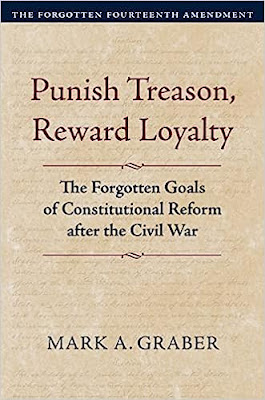
Mark A. Graber, Punish Treason, Reward Loyalty: The Forgotten Goals of Constitutional Reform after the Civil War (University of Kansas Press, 2023)
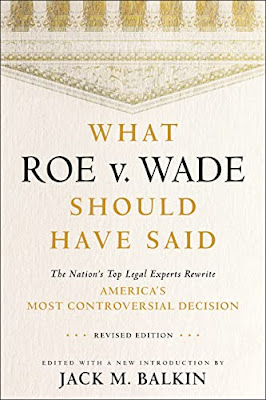
Jack M. Balkin, What Roe v. Wade Should Have Said: The Nation's Top Legal Experts Rewrite America's Most Controversial Decision - Revised Edition (NYU Press, 2023)

Andrew Koppelman, Burning Down the House: How Libertarian Philosophy Was Corrupted by Delusion and Greed (St. Martin’s Press, 2022)

Gerard N. Magliocca, Washington's Heir: The Life of Justice Bushrod Washington (Oxford University Press, 2022)
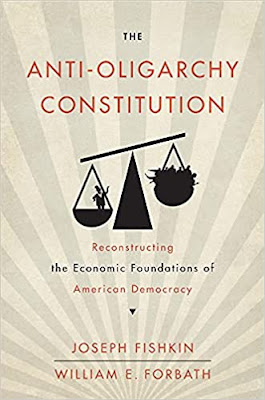
Joseph Fishkin and William E. Forbath, The Anti-Oligarchy Constitution: Reconstructing the Economic Foundations of American Democracy (Harvard University Press, 2022)
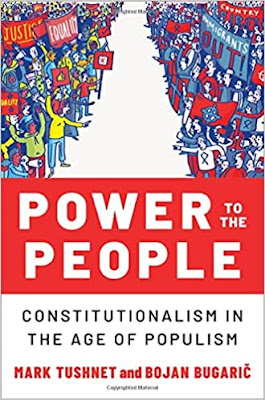
Mark Tushnet and Bojan Bugaric, Power to the People: Constitutionalism in the Age of Populism (Oxford University Press 2021).

Mark Philip Bradley and Mary L. Dudziak, eds., Making the Forever War: Marilyn B. Young on the Culture and Politics of American Militarism Culture and Politics in the Cold War and Beyond (University of Massachusetts Press, 2021).

Jack M. Balkin, What Obergefell v. Hodges Should Have Said: The Nation's Top Legal Experts Rewrite America's Same-Sex Marriage Decision (Yale University Press, 2020)

Frank Pasquale, New Laws of Robotics: Defending Human Expertise in the Age of AI (Belknap Press, 2020)

Jack M. Balkin, The Cycles of Constitutional Time (Oxford University Press, 2020)

Mark Tushnet, Taking Back the Constitution: Activist Judges and the Next Age of American Law (Yale University Press 2020).

Andrew Koppelman, Gay Rights vs. Religious Liberty?: The Unnecessary Conflict (Oxford University Press, 2020)

Ezekiel J Emanuel and Abbe R. Gluck, The Trillion Dollar Revolution: How the Affordable Care Act Transformed Politics, Law, and Health Care in America (PublicAffairs, 2020)

Linda C. McClain, Who's the Bigot?: Learning from Conflicts over Marriage and Civil Rights Law (Oxford University Press, 2020)
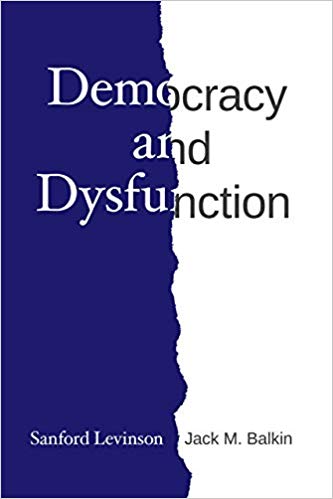
Sanford Levinson and Jack M. Balkin, Democracy and Dysfunction (University of Chicago Press, 2019)

Sanford Levinson, Written in Stone: Public Monuments in Changing Societies (Duke University Press 2018)

Mark A. Graber, Sanford Levinson, and Mark Tushnet, eds., Constitutional Democracy in Crisis? (Oxford University Press 2018)

Gerard Magliocca, The Heart of the Constitution: How the Bill of Rights became the Bill of Rights (Oxford University Press, 2018)

Cynthia Levinson and Sanford Levinson, Fault Lines in the Constitution: The Framers, Their Fights, and the Flaws that Affect Us Today (Peachtree Publishers, 2017)

Brian Z. Tamanaha, A Realistic Theory of Law (Cambridge University Press 2017)

Sanford Levinson, Nullification and Secession in Modern Constitutional Thought (University Press of Kansas 2016)

Sanford Levinson, An Argument Open to All: Reading The Federalist in the 21st Century (Yale University Press 2015)

Stephen M. Griffin, Broken Trust: Dysfunctional Government and Constitutional Reform (University Press of Kansas, 2015)

Frank Pasquale, The Black Box Society: The Secret Algorithms That Control Money and Information (Harvard University Press, 2015)

Bruce Ackerman, We the People, Volume 3: The Civil Rights Revolution (Harvard University Press, 2014)
Balkinization Symposium on We the People, Volume 3: The Civil Rights Revolution

Joseph Fishkin, Bottlenecks: A New Theory of Equal Opportunity (Oxford University Press, 2014)

Mark A. Graber, A New Introduction to American Constitutionalism (Oxford University Press, 2013)

John Mikhail, Elements of Moral Cognition: Rawls' Linguistic Analogy and the Cognitive Science of Moral and Legal Judgment (Cambridge University Press, 2013)

Gerard N. Magliocca, American Founding Son: John Bingham and the Invention of the Fourteenth Amendment (New York University Press, 2013)

Stephen M. Griffin, Long Wars and the Constitution (Harvard University Press, 2013)

Andrew Koppelman, The Tough Luck Constitution and the Assault on Health Care Reform (Oxford University Press, 2013)

James E. Fleming and Linda C. McClain, Ordered Liberty: Rights, Responsibilities, and Virtues (Harvard University Press, 2013)
Balkinization Symposium on Ordered Liberty: Rights, Responsibilities, and Virtues

Andrew Koppelman, Defending American Religious Neutrality (Harvard University Press, 2013)

Brian Z. Tamanaha, Failing Law Schools (University of Chicago Press, 2012)

Sanford Levinson, Framed: America's 51 Constitutions and the Crisis of Governance (Oxford University Press, 2012)

Linda C. McClain and Joanna L. Grossman, Gender Equality: Dimensions of Women's Equal Citizenship (Cambridge University Press, 2012)

Mary Dudziak, War Time: An Idea, Its History, Its Consequences (Oxford University Press, 2012)

Jack M. Balkin, Living Originalism (Harvard University Press, 2011)

Jason Mazzone, Copyfraud and Other Abuses of Intellectual Property Law (Stanford University Press, 2011)

Richard W. Garnett and Andrew Koppelman, First Amendment Stories, (Foundation Press 2011)

Jack M. Balkin, Constitutional Redemption: Political Faith in an Unjust World (Harvard University Press, 2011)

Gerard Magliocca, The Tragedy of William Jennings Bryan: Constitutional Law and the Politics of Backlash (Yale University Press, 2011)

Bernard Harcourt, The Illusion of Free Markets: Punishment and the Myth of Natural Order (Harvard University Press, 2010)

Bruce Ackerman, The Decline and Fall of the American Republic (Harvard University Press, 2010)
Balkinization Symposium on The Decline and Fall of the American Republic

Ian Ayres. Carrots and Sticks: Unlock the Power of Incentives to Get Things Done (Bantam Books, 2010)

Mark Tushnet, Why the Constitution Matters (Yale University Press 2010)
Ian Ayres and Barry Nalebuff: Lifecycle Investing: A New, Safe, and Audacious Way to Improve the Performance of Your Retirement Portfolio (Basic Books, 2010)
.jpg)
Jack M. Balkin, The Laws of Change: I Ching and the Philosophy of Life (2d Edition, Sybil Creek Press 2009)

Brian Z. Tamanaha, Beyond the Formalist-Realist Divide: The Role of Politics in Judging (Princeton University Press 2009)
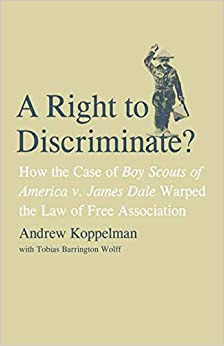
Andrew Koppelman and Tobias Barrington Wolff, A Right to Discriminate?: How the Case of Boy Scouts of America v. James Dale Warped the Law of Free Association (Yale University Press 2009)

Jack M. Balkin and Reva B. Siegel, The Constitution in 2020 (Oxford University Press 2009)
Heather K. Gerken, The Democracy Index: Why Our Election System Is Failing and How to Fix It (Princeton University Press 2009)

Mary Dudziak, Exporting American Dreams: Thurgood Marshall's African Journey (Oxford University Press 2008)

David Luban, Legal Ethics and Human Dignity (Cambridge Univ. Press 2007)

Ian Ayres, Super Crunchers: Why Thinking-By-Numbers is the New Way to be Smart (Bantam 2007)

Jack M. Balkin, James Grimmelmann, Eddan Katz, Nimrod Kozlovski, Shlomit Wagman and Tal Zarsky, eds., Cybercrime: Digital Cops in a Networked Environment (N.Y.U. Press 2007)

Jack M. Balkin and Beth Simone Noveck, The State of Play: Law, Games, and Virtual Worlds (N.Y.U. Press 2006)

Andrew Koppelman, Same Sex, Different States: When Same-Sex Marriages Cross State Lines (Yale University Press 2006)
Brian Tamanaha, Law as a Means to an End (Cambridge University Press 2006)
Sanford Levinson, Our Undemocratic Constitution (Oxford University Press 2006)
Mark Graber, Dred Scott and the Problem of Constitutional Evil (Cambridge University Press 2006)
Jack M. Balkin, ed., What Roe v. Wade Should Have Said (N.Y.U. Press 2005)
Sanford Levinson, ed., Torture: A Collection (Oxford University Press 2004)
Balkin.com homepage
Bibliography
Conlaw.net
Cultural Software
Writings
Opeds
The Information Society Project
BrownvBoard.com
Useful Links
Syllabi and Exams